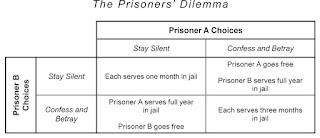Task 3B
This task
shall aim to critically reflect on the given concepts from Reader 3, with an
explanation on how they give an understanding to my current professional
practice. The concepts listed are cooperation, affiliation, and theory of
connectivity which is a set of related explanations which are social
constructionism, connectivism and communities of practice.
The given
concepts above all help with the understanding of professional networks, which
in theory is a group of individuals whom share a common interest. For example,
a group of people who attend the same sports club and compete in the same
sport. Some individuals then go on to be a lot closer, such as affiliations,
for example, they play for the same team, and others may have slightly more
distanced relationships such as a spectator of the sport and the players.
Cooperation
is a theory that sets out principles which can in turn be a method of tackling
issues and problems in relation to society and relationships to name a few.
This theory is also associated with Game Theory, which is a study of ‘conflict
and cooperation’, it helps to understand strategies of components such as
individuals, groups etc. who are interdependent (T L, Turocy, 2001). Robert
Axelrod noticed the importance of cooperation between agents, and also noticed
more greatly the benefits of cooperation itself. This is best explained in ‘Prisoners
Dilemma’.
The second
concept, affiliation, is a term which is commonly associated with psychology Which
relates to how individuals seek enjoyment from affiliations with others. It in
turn is a social psychological matter which acts as a support system dependent
on other individuals who are too seeking support in a related field. The
concept is explained by Crisp & Turner, 2007, as a ‘social process that provides us with a network of support that will
help us when we are in need. ’To me, this concept is universal as it states
that all individuals needs affiliation, regardless of our position.
Social constructionism
explains how meanings and definitions are made about the world and life as we
live it. This is done in three ways, with the first one being social
interaction. We interact with one another and share our experiences which
creates imagery and definition for another person. We engage in a particular
network, and we contribute to people who share the same outlook as us, giving
meaning.
The second way is connectivism, which emphasises on learning and how we receive ideas.
More commonly, the use of Web 2.0, through social networks and creator and
reader ideas. This concept also has a link to ethical principles, for example
what not to share, and what comments are seen as appropriate. Wegner identified
three main points in relation to communities of practice which are what it is
about, the functions, and its capability (Wegner, 1998).
Nationalaffairs.com.
[Online]. Available from:
[Accessed
2.12.16]
Turocy T, L.
(2001). Game Theory. Texas A&M
University. London School of Economics. CDAM Research Report. [Online].
Available from: http://www.cdam.lse.ac.uk/Reports/Files/cdam-2001-09.pdf
Wegner, E.
(1998). Communities of practice:
Learning, meaning, and identity. Cambridge: University of Cambridge Press.

love your table hannah its easy to follow and shows how the system works :)
ReplyDeleteThanks Hannah how do you use some of these ideas in your practice?
ReplyDeleteLink these and the previous blog to you 1000 words ! this is about your knowledge and knowing. Like the new sources - should we put them in a new Reader 1 draft?
ReplyDeleteThanks Hannah
ReplyDelete